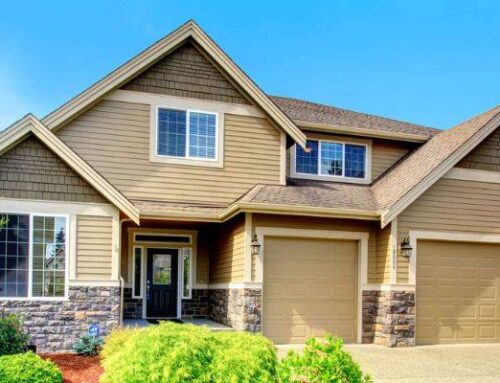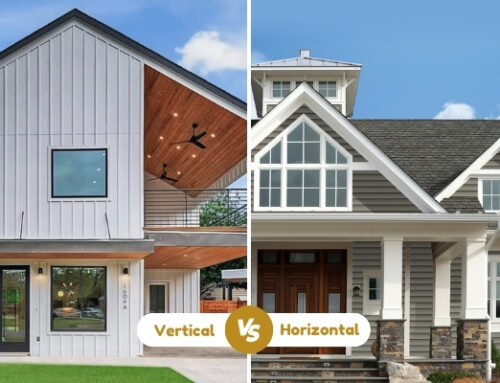The siding of our house is more than just one outer layer; The siding is important for both structural stability and visual appeal. This is the face that presents it to the world. The ideal siding solution, therefore, is a harmonious mix of visual attraction and strong strength. This guide will navigate the exciting world of siding options, empowering you to choose a material that not only takes your home’s appeal to new heights, but also provides unbreakable security for the coming years. We will attack various materials, their aesthetic qualities, durability, and how really stunning and flexible homes will attack that correct balance between beauty for the exterior and bronch.
Creating an informed option that complements your home architecture design and care preferences, requires an understanding of harmony between strength and beauty.
In this guide, we will identify major factors to consider when selecting siding that enhances the appearance of your home when providing strong security. By evaluating elements such as material structure, insulation properties, color and texture options, and local climate ideas, home owners can create options that reflect individual tastes and increase property value. Whether you are planning a complete renovation or a simple upgrade, this article will provide the required insight to select siding that marries beautifully with flexibility, ensuring that your home stands in the neighborhood for the coming years.
After helping hundreds of homeowners to navigate siding selection, we have identified the major factors that provide both beauty and performance.
1. First Impressions Matter: Curb Appeal Essentials
Color Selection That Stands the Test of Time
• Neutral palettes (warm taupes, soft greiges) appeal to 72% of buyers while resisting dating
• Accent strategies: Use darker shades on lower levels to ground the home visually
• Historical accuracy: Research original color schemes for period homes
Profile Personality:
- Board & batten: Adds vertical interest to ranch homes
- Shake-style: Creates cottage charm without fire risk
- Smooth panels: Delivers crisp, contemporary lines
Pro Tip: View large samples at different times of day – colors shift dramatically in changing light.
2. The Durability Equation: What Really Lasts
Material Showdown
| Material | Type Lifespan | Weather Resistance | Maintenance Needs |
| Fiber Cement | 30-50 years | Excellent | Repaint every 10-15 years |
| Engineered Wood | 20-30 years | Good (avoid prolonged wetness) | Stain every 5-8 years |
| Vinyl | 30-40 years | Good (varies by thickness) | Annual wash |
| Metal | 40-70 years | Exceptional | Occasional dent repair |
Climate-Specific Champions:
• Hurricane zones: Impact-resistant vinyl or corrugated metal
• Fire country: Fiber cement or stucco
• Termite territories: Metal or vinyl
• Freeze-thaw regions: Thick vinyl or insulated composites
3. Installation Insights That Prevent Regrets
Critical Details Professionals Get Right
✔ Breathable barriers prevent moisture traps behind siding
✔ Expansion gaps accommodate material movement (varies by type)
✔ Flashing integration at all penetrations and transitions
✔ Pattern randomization avoids artificial “striped” look
Red Flags During Installation
- Butted joints without expansion space
- Visible fastener heads on face-nailed materials
- Lack of starter strips at foundation
4. Cost vs Value: Where to Invest
Premium Upgrades Worth Considering
- Rainscreen systems (adds 10-15% cost but prevents moisture issues)
- Pre-finished materials (lasts 2-3x longer than field-applied finishes)
- Insulated backers (improves energy efficiency by 12-18%)
Budget-Smart Strategies
• Use premium materials on street-facing elevations only
• Combine materials (brick lower + siding upper)
• Time installation with roofing replacement for labor savings
5. Neighborhood Context: Standing Out Without Clashing
Harmonizing Principles
- Match at least one neighbor’s material or color
- Echo architectural details (window trim colors, roof tones)
- Scale patterns appropriately (narrow profiles suit small homes)
When to Break the Rules
- Corner lots can handle bolder statements
- Historic districts often allow one “accent side”
- Contemporary designs benefit from material contrasts
6. Maintenance Realities: No Free Passes
Annual Must-Dos for All Siding Types
• Clear vegetation (maintain 12″ clearance)
• Check caulking at trim joints
• Inspect for insect activity (especially woodpeckers on cedar)
• Clean with appropriate methods (soft wash vs pressure wash)
Long-Term Care Schedule
- Vinyl: 5-year professional inspection for cracks
- Fiber Cement: 10-year repainting cycle
- Wood: Annual staining touch-ups on sun-exposed sides
7. Future-Proofing Your Investment
Resale Considerations
- Neutral colors recoup 85-93% of project costs
- Quality siding installations increase showings by 22%
- Document all warranties for future buyers
Technology to Watch
• Self-cleaning nanoparticle coatings
• Integrated solar panel siding
• Color-changing temperature-responsive finishes
8. Texture & Shadow Play: Creating Dimension
Advanced Design Techniques
• Layered siding – Combine horizontal lap siding with vertical accents at gables
• Depth variations – Use 1/2″ reveals between boards for dramatic shadows
• Material mixing – Pair smooth fiber cement with rough stone veneers
Pro Tip: View samples at dusk – low-angle light reveals texture details invisible at noon
9. The Science of Color Fade Resistance
What Really Works
- PVDF resin coatings (on metal) retain 95% color after 30 years
- Through-body color (fiber cement) vs surface stains
- UV inhibitors in premium vinyl formulations
Fade-Prevention Checklist
✔ South-facing walls need lighter colors
✔ Avoid dark blues/purples (fastest to fade)
✔ Request 10-year fade warranties
10. Hidden Structural Considerations
What’s Behind the Beauty
• Moisture management – Drainage planes vs vapor barriers
• Wall sheathing prep – Repair requirements before installation
• Impact resistance – Hail ratings by material grade
Must-Ask Questions
“What underlayment system do you recommend?”
“How will you address existing wall imperfections?”
“What’s the wind uplift rating for this system?”
The Final Checklist Before Ordering
Last-Minute Verification
- Reviewed all samples on the actual house at different times
- Confirmed lead times (some materials take 12+ weeks)
- Checked local material availability for future repairs
- Verified installer has worked with this specific product before
Warranty Fine Print
• Transferability to future owners
• Professional installation requirements
• Maintenance obligations to keep coverage
Bonus: Secret Designer Trick
For instant upscale appeal, install siding 1/2″ longer than standard at corner boards – this subtle detail reads as custom craftsmanship.
Conclusion:
Choosing the right siding just looks – it is about finding the right balance between beauty and durability. The correct material and style can immediately increase the curb appeal of your home while standing for weather, time and wear. Choosing the right siding for your home is an investment in both your immediate visual appeal and its long -term structural integrity. By careful considering the diverse materials, their inherent strength, and aesthetics into your property, you can achieve that prestigious balance of beauty and bronch. Whether you are ready for wooden classic elegance, low maintenance durability of vinyl, strong flexibility of fiber cement, or smooth modernity of metal, the key is to align your personal style with a material that can withstand a unique climate. Ultimately, the right siding option will not only increase the appeal of your home curb, making it a source of pride, but will also provide the need to meet its need, ensuring that your investment remains safe and stunning for the years to come. Take time out to know your options, weigh professionals and opposition, and choose a siding that speaks volume – both visually and structurally.




